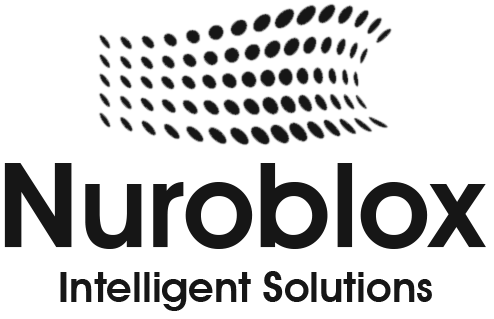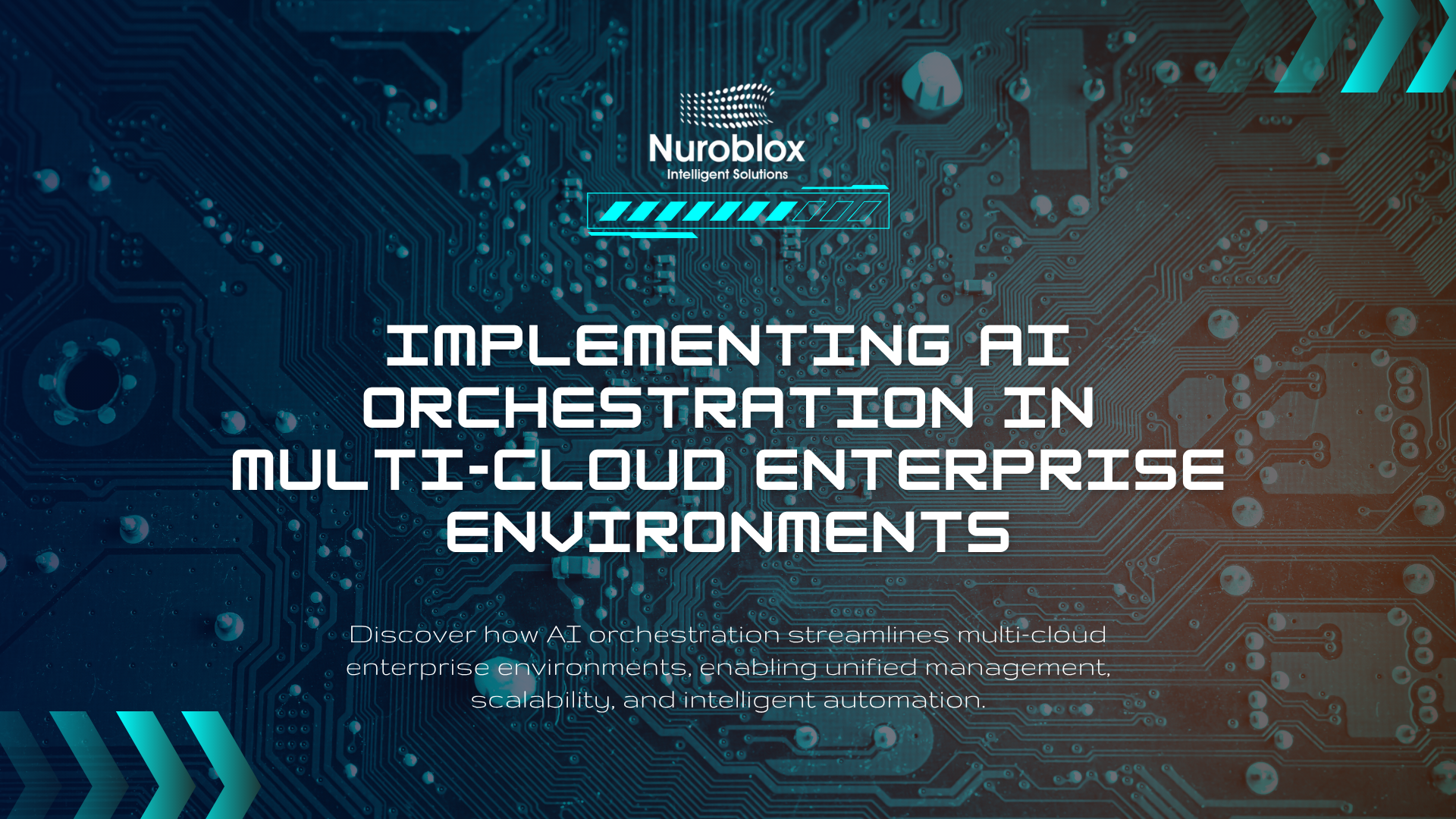Implementing AI Orchestration in Multi-Cloud Enterprise Environments
AI orchestration in multi-cloud environments has transitioned from experimental technology to strategic imperative, with 89% of enterprises adopting multi-cloud strategies to enhance operational flexibility and reduce vendor dependency. The global AI orchestration market reached $11.02 billion in 2025 and projects growth to $30.23 billion by 2030, driven by enterprises seeking intelligent automation across distributed cloud infrastructure.
Market Drivers and Adoption Trends
Enterprise adoption of AI orchestration platforms accelerated dramatically from less than 10% in 2020 to 50% in 2025, representing a fivefold increase within five years. Gartner research indicates that by 2026, over 45% of enterprise AI workflows will employ agentic orchestration frameworks, up from less than 10% in 2023. This rapid adoption stems from three primary drivers – labor shortage mitigation, competitive pressure for operational efficiency, and the measurable ROI demonstrated by early adopters.
Organizations implementing orchestrated AI systems report operational cost reductions of 25-30%, coupled with productivity improvements of 30-60% through elimination of manual task-switching and automated workflow optimization. Microsoft documented a 30% reduction in customer support costs following AI-powered orchestration implementation, while broader industry data shows up to 40% reduction in operational costs and 25% increase in revenue growth.
Technical Architecture for Multi-Cloud AI Orchestration
Unified Control Plane Design
Effective multi-cloud AI orchestration requires a single control plane managing microservices across AWS, Azure, and Google Cloud Platform clusters. Kubernetes has emerged as the de facto standard for container orchestration, providing cross-cloud service discovery, network connectivity, and intelligent scheduling based on latency, cost, and failover policies. This unified layer abstracts physical resources across cloud providers while maintaining enterprise-level controls and governance.
Modern orchestration platforms eliminate challenges inherent in managing multiple disparate tools by centralizing AI operations under cohesive systems that provide seamless access to various AI models. The architecture must support dynamic resource distribution based on real-time usage patterns and forecasted demand while identifying cost-saving opportunities through workload consolidation and intelligent scheduling.
Data Management and Integration
Centralized data lakes using object storage solutions like AWS S3, Azure Blob Storage, or Google Cloud Storage unify data access across platforms while maintaining data governance and security through encryption and role-based access controls. Cloud-native data integration tools including AWS Glue, Azure Data Factory, and Google Cloud Data Fusion enable efficient data movement and transformation across multi-cloud environments.
Workflow orchestration tools like Apache Airflow and Azure Data Factory automate complex, multi-cloud data pipelines, ensuring seamless data flow and integration necessary for AI model training and inference. Enterprises must implement robust data governance policies that protect sensitive information across multiple clouds while ensuring compliance and data integrity.
Implementation Strategy and Best Practices
Phase 1 – Assessment and Planning
Organizations must begin with comprehensive evaluation of existing data assets within multiple cloud environments to understand the data landscape. This assessment phase includes profiling and classifying data to apply appropriate governance policies, eliminating redundant and duplicate data sets to maintain compliance while optimizing cost and performance.
Forming a cross-functional team comprising data owners, managers, and subject matter experts ensures formulation of effective data policies for multi-cloud setups, org-wide adoption, and strict adherence to governance and compliance requirements. This team establishes clear data stewardship, risk management protocols, and continuous monitoring to ensure cloud resources align with organizational and regulatory standards.
Phase 2 – Platform Selection and Architecture
Selection of orchestration platforms must prioritize cross-platform compatibility and support for open standards to address interoperability challenges inherent in multi-cloud deployments. Microsoft AutoGen and IBM watsonx lead enterprise adoption with robust orchestration frameworks, while platforms like Kubiya and SuperAGI enable secure, flexible, and open-source agent operations.
Infrastructure as Code (IaC) tools such as Terraform or Pulumi automate repetitive tasks, increasing efficiency and minimizing configuration errors across cloud environments. The technical architecture should incorporate self-healing capabilities that automatically detect, diagnose, and remediate issues before service disruptions occur, dramatically reducing operational burden on technical teams.
Phase 3 – Security and Compliance Framework
AI-powered orchestration strengthens security frameworks through anomaly detection, predictive threat intelligence, and adaptive access control policies that evolve with changing organizational needs. Enterprises must adopt standardized tools and processes for deployment, monitoring, and security to streamline operations and maintain compliance across different cloud platforms.
Compliance policies must address diverse regulatory requirements including GDPR and HIPAA, emphasizing data sovereignty, auditability, and vendor accountability to maintain regulatory alignment across jurisdictions. Regular policy reviews and updates accommodate emerging technologies and regulations while fostering organizational accountability culture.
Phase 4 – Deployment and Optimization
Real-world implementations demonstrate 30-70% faster processing across finance, manufacturing, and IT sectors through coordinated, specialized agent ecosystems. Cloud management platforms like CloudHealth or CloudCheckr consolidate visibility and control over various cloud resources, addressing complexity inherent in managing multiple environments.
Cost management strategies employ tools and techniques including spot instances, automated scaling, and continuous monitoring to reduce waste and optimize spending across variable pricing models. Organizations should implement real-time dashboards providing instant insights into resource utilization, helping teams identify inefficiencies and optimize workflows continuously.
Measuring ROI and Performance Metrics
Quantifying AI orchestration value requires tracking specific metrics that demonstrate business impact. Key performance indicators include –
Operational Efficiency – Enterprises report 25% reduction in labor costs and 30% increase in productivity through AI-powered automation implementation. Task completion rates improve significantly as employees eliminate up to 9% of annual work time previously lost to manual task-switching.
Financial Impact – Organizations achieve up to 30% reduction in operational costs, 25% increase in sales, and 30% improvement in customer satisfaction scores. IBM research found companies implementing AI agent orchestration frameworks averaged 35% reduction in IT costs and 20% increase in business agility.
Processing Speed – Cross-functional coordination scenarios show productivity boosts up to 60% in workflows involving multiple decision points, while process time reductions average 20% across automated operations.
Infrastructure Optimization – Predictive scaling and self-healing infrastructure reduce downtime and enable technical teams to focus on innovation rather than troubleshooting, representing fundamental evolution in operational management.

Complexity and Skills Gap
Managing multiple cloud environments requires specialized skills that may necessitate internal training programs rather than external hiring. The complexity stems from differing APIs across cloud providers, making workload synchronization challenging and potentially slowing productivity due to varying workflows for identical tasks.
Organizations address this through comprehensive training initiatives and adoption of platforms offering graphical interfaces that enable business users to understand complex metrics without deep technical expertise. Cross-functional transparency integrations with existing enterprise tools, project management systems, and business intelligence platforms prevent AI workflows from becoming isolated silos.
Interoperability and Standardization
Lack of standardization between cloud platforms complicates integration of AI tools and models, particularly for hybrid cloud solutions. Enterprises should adopt tools and frameworks promoting cross-platform compatibility, reducing risks of future incompatibilities while careful planning addresses integration challenges.
Kubernetes provides a unifying layer that leverages best features of each cloud provider while avoiding their limitations, creating robust and flexible microservice deployments that enhance resilience and avoid vendor lock-in.
Cost Predictability
AI workloads involving large datasets or model training can be resource-intensive, with pay-as-you-go cloud pricing models leading to unforeseen costs if not carefully managed. Cost management requires forecasting resource demands, reviewing billing structures regularly, and employing vendor-provided cost optimization tools to prevent budget overruns that threaten project sustainability.
Organizations should implement continuous monitoring of resource allocation to anticipate scalability issues before they affect operational efficiency, ensuring smooth scaling processes that balance performance requirements with financial constraints.
Governance and Compliance
Security and compliance across different cloud platforms demands standardized approaches to data protection. Enterprises must establish robust governance frameworks with clear roles, data stewardship, and continuous risk management supporting efficient, secure cloud operations.
Compliance frameworks should emphasize auditability, with regular assessment ensuring adherence to global standards and maintaining regulatory alignment as requirements evolve. Investment in monitoring and auditing tools streamlines compliance and governance practices while fostering accountability culture.
Future Trajectory and Strategic Implications
The evolution of enterprise AI workflow orchestration represents transformation from technical challenge to critical element of strategic planning. Companies focusing on modular system design, aligning AI initiatives with business goals, and enforcing strong governance position themselves to unlock AI potential while adhering to stringent security and compliance requirements.
Multi-cloud strategies enable organizations to achieve best-of-breed outcomes for different requirements – leveraging AWS for variety and cost flexibility, Microsoft Azure for Windows solution compatibility, or Google Cloud for machine learning and Kubernetes capabilities. This flexibility allows enterprises to take advantage of latest cloud offerings from multiple providers simultaneously while avoiding vendor lock-in.
AI-powered cloud orchestration revolutionizes enterprise management of multi-cloud and hybrid cloud environments by transforming operations from manually-defined workflows to autonomous systems capable of continuous optimization. Organizations implementing comprehensive orchestration strategies report sustained business value through continuously monitored and improved metrics that deliver operational excellence.
The convergence of AI orchestration with multi-cloud infrastructure marks the beginning of an era defined by sophisticated human-AI collaboration, where enterprises achieve unprecedented efficiency, reliability, and cost optimization across distributed computing environments. Success requires structured planning, robust governance frameworks, and commitment to continuous performance monitoring that ensures orchestration platforms deliver measurable business outcomes beyond initial deployment.


